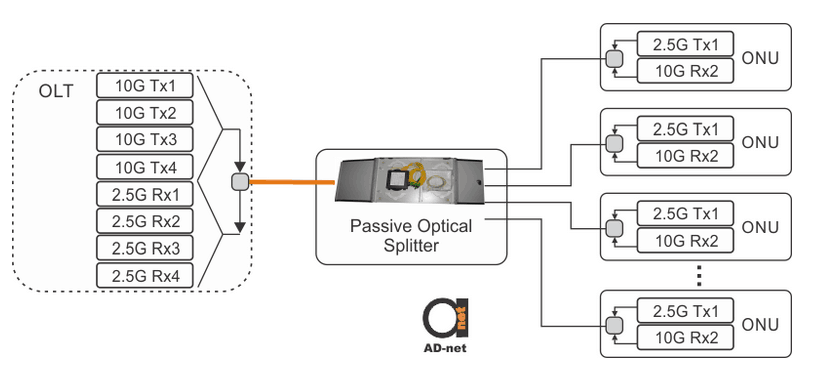40 and 100 Gbps transmission rates become a standard for optical transmission systems. One of the reasons for that is increasing number of high-speed bandwidth required applications. There are three possible ways of how PON can be applied for this kind of system.
1. Backward compatibility.

Figure 1. A stacked TDMA-PON with 40 Gbps.
Existing 10-Gbps PONs can be stacked together using WDM technology. As Figure 1 suggests, stacking already deployed optical distribution networks can give a capacity of 40 Gbps downstream and 10 Gbps upstream (10 Gbps x 4 = 40 Gbps). this system can coexist with 1- and 10-Gbps PONs and is backward compatible with TDMA-PONs.
2. ODN solution
Optical distribution network of TDMA-PON should be modified and some of the parts might require replacement. New optical distribution network would rely on one of these:
-
AWG (Arrayed Waveguide Gratings)
-
hybrid system with WDM multiplexer and splitter
-
optical distribution network with multiple stages
If there are 25-Gbps optical lines signal, then a rate of 100 Gbps can be provided with the help of CWDM.
3. Future solution
Using new technologies with possibility to transfer signal with the high capacity. Such technologies include OFDMA-PON (Orthogonal Frequency Division Multiple Access) which is improving multiplexing gain. It is achieved using subcarrier communications, advanced coding and DSP (Digital Signal Processing). Another “future” solution is the WDM-PON which is based on the signal coherence between the OLT and ONUs.


